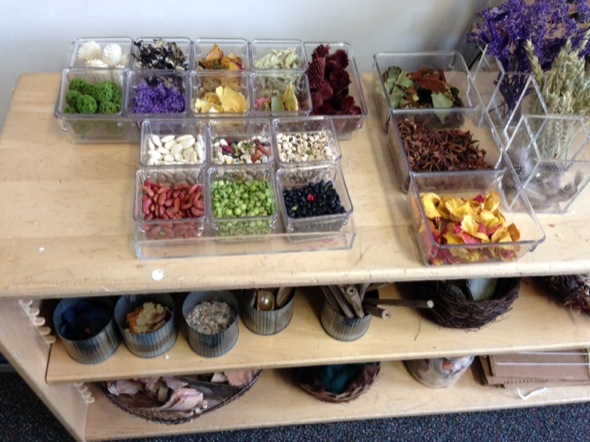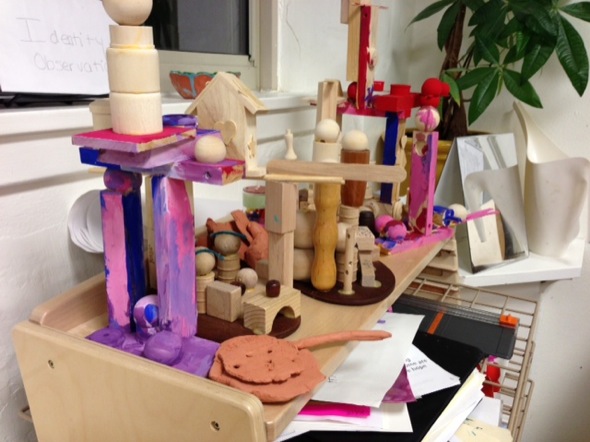“Every material comes with a story”
These are the words of Jennifer Azzariti, published leader in the Reggio model of early childhood education. I was able to hear Jennifer speak at a recent conference at McDonald Montessori school. I love exploring new methods of teaching from around the world and am here today to bring you one of my many ‘ah ha’ moments in the process of my research.
Do you know the materials we use with students on a daily basis have power?
More power than we dare to realize.
During her session, Jennifer told a story about her school, the Model Early Learning Center in Washington D.C. The first year they opened, they were trying to build up materials in their school and engage families to take part in the school. An invitation was sent out to parents to bring anything at home that was out of the ordinary to be used as materials for the school. She talked about a very timid parent who came up to her holding a box of scraps of shingle material that came of one of his construction projects. “Is this what you are talking about?” he asked. Her eyes lit up. It’s perfect – She said. The parent instantly felt a part of the community at the school because of his donation.

Rethinking Materials in Your Art Room
Tell me what happens when you bring out the weaving looms, or the clay, or allow students to paint with the tip of pencil. What kind of reaction do you get when introducing junk sculptures or radial symmetry on old CD’s? Engaging lessons and most importantly the materials we carefully choose for our student’s art projects, can make a huge difference in the art room atmosphere. Students are unfortunately immune to the plastic world of primary colored bins with perfectly divvied out supplies for a make and take kit that all looks the same. It’s no wonder they get so excited when the art teacher brings out REAL clay and REAL yarn.
One way to spice up your lessons and help students communicate their ideas in new ways is by considering art projects that involve authentic and unsuspecting materials (things you can’t necessarily find in the nearest art catalog) and engage students on a whole new level. Perhaps just choosing one lesson per grade level to do something ‘different’ with could be a nice balance, as I do know finding enough authentic materials for your large class sizes can be challenging. (Yes, I am guilty of being ‘that teacher’ who is out gathering 500 sticks for a book making project).

Because donations can get a little tricky when they are NOT wanted, it’s great to be specific with parents and let them know exactly what you are looking for, or have a specific project in mind when asking for materials. Some teachers choose to create art projects based upon what they already have a surplus of, while others go out hunting for the perfect material to do the job. Whether it be a thrift store, nature as inspiration or a surplus donation from a local company, there are many options.
I hope this insight and inspiration gets you thinking differently about the materials you use in the art room.
What is the strangest material you’ve used in an art project? How did you collect it?
What are some ways you want to rethink materials in your art room?
Magazine articles and podcasts are opinions of professional education contributors and do not necessarily represent the position of the Art of Education University (AOEU) or its academic offerings. Contributors use terms in the way they are most often talked about in the scope of their educational experiences.




